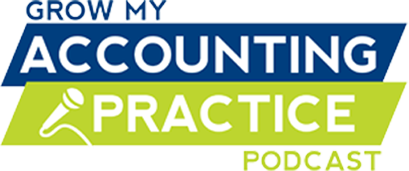Since writing Profit First, I’ve heard quite a few comments (and eye rolls) over the word, “profit”, itself. This always makes me curious. What’s so bad about making a profit?
Making a profit gets a bad rap. Here’s why:
- Misconception about profit: Some individuals might associate profit with greed or exploitation, believing that it comes at the expense of others. This misconception overlooks the fact that profit is essential for the sustainability and growth of businesses.
Negative corporate practices: Instances of unethical business practices, where profit is pursued at the expense of employees, customers, or the environment, can tarnish the reputation of profit-oriented initiatives. I do feel that today, there are more businesses with integrity and truly put good out into the world. - Emphasis on social responsibility: In an era where corporate social responsibility and ethical business practices are increasingly valued, some people view profit-centric approaches as incompatible with broader societal well-being.
- Fear of exploitation: People may fear being taken advantage of by businesses solely focused on profit maximization, leading to skepticism or resistance towards profit-centric strategies.
I get it – and, another way of looking at profit is that it’s essential. You do have to recognize that profit, when earned ethically and responsibly, serves as a vital metric of your business success. It enables reinvestment in the business, job creation, innovation, and ultimately, the ability to make a positive impact on employees, customers, and communities.
Profit is a fundamental aspect of financial management aimed at ensuring the long-term viability and prosperity of your businesses.
Ok, now that’s out of the way. Let’s look at the difference between the owner’s comp and your profit.
Central to the Profit First methodology is the clear distinction between profit distribution and owner’s compensation, a concept that can significantly impact the financial health and longevity of your business.
Profit is non negotiable. It builds wealth for your business.
Profit distribution refers to setting aside a predetermined percentage of revenue for the business’s profit accounts. This allocation is separate from other accounts, such as operating expenses or taxes, and is intended to accumulate over time to build wealth for the business owner. By prioritizing profit distribution, you’ll create a sustainable financial foundation that enables long-term growth and stability.
Here’s the breakdown:
Profit distribution is all about strategically allocating your profits to ensure financial stability, growth, and prosperity for your business.
- Celebrate (5-10%): First things first, let’s celebrate! Allocate a percentage of your profits (ideally 5-10%) to your celebration account. This is your opportunity to reward yourself and your team for hitting your profit goals and achieving success.
- Owner’s reward (30-50%): Next up, let’s talk about owner’s rewards—the fruits of your labor. Allocate a percentage of your profits (typically 30-50%) to your owner’s reward account. This is your chance to pay yourself a well-deserved bonus for your hard work and dedication. Whether it’s investing in yourself, treating yourself to something special, or saving for the future, use your owner’s reward to enjoy the fruits of your labor and fuel your personal growth and prosperity.
- Reinvest (50-60%): Now, let’s turn our attention to reinvestment—the key to sustainable growth and success. Allocate a percentage of your profits (typically 50-60%) to your reinvestment account. This is your opportunity to reinvest in your business’s future by funding growth initiatives, expanding your team, upgrading equipment, or investing in marketing and innovation.
- Taxes (15-20%): Ah, taxes. The inevitable reality of business ownership. With Profit First, we take a proactive approach to taxes by allocating a percentage of our profits (typically 15-20%) to our tax account. This ensures that you have the funds set aside to cover your tax obligations and avoid any nasty surprises come tax time.
- Profit First (5-10%): Last but not least, let’s circle back to profit. In addition to celebrating your success, rewarding yourself, reinvesting in your business, and setting aside funds for taxes, consider implementing a Profit First allocation at regular intervals (e.g., quarterly or annually). This allows you to further bolster your profit reserves and celebrate your success along the way.
When you’ve mastered the management of your cash flow to this degree, you’ll not only sustain a thriving business that generates revenue but also prioritizes profit and personal well-being. And that? That allows you to put even more good into the world.
I am wishing you tremendous success!
-Mike
Join me on the journey: (Are you on TikTok? I am if you want to meet me there.)
Last I saw there was a discount! Get Profit First for you or a friend at Amazon, Barnes & Noble, or any of your favorite booksellers.
Instagram, LinkedIn










